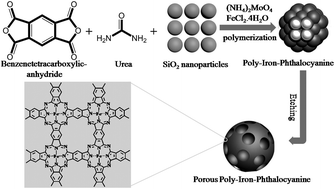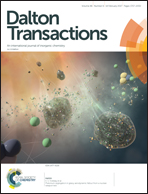Highly exposed Fe–N4 active sites in porous poly-iron-phthalocyanine based oxygen reduction electrocatalyst with ultrahigh performance for air cathode†
Abstract
Progress in the development of efficient electrocatalysts for oxygen reduction reactions is imperative for various energy systems such as metal–air batteries and fuel cells. In this paper, an innovative porous two-dimensional (2D) poly-iron–phthalocyanine (PFe–Pc) based oxygen reduction electrocatalyst created with a simple solid-state chemical reaction without pyrolysis is reported. In this strategy, silicon dioxide nanoparticles play a pivotal role in preserving the Fe–N4 structure during the polymerization process and thereby assist in the development of a porous structure. The new polymerized phthalocyanine electrocatalyst with tuned porous structure, improved specific surface area and more exposed catalytic active sites via the 2D structure shows an excellent performance towards an oxygen reduction reaction in alkaline media. The onset potential (E = 1.033 V) and limiting current density (I = 5.58 mA cm−2) are much better than those obtained with the commercial 20% platinum/carbon electrocatalyst (1.046 V and 4.89 mA cm−2) and also show better stability and tolerance to methanol crossover. For practical applications, a zinc–air (Zn–air) battery and methanol fuel cell equipped with the PFe–Pc electrocatalyst as an air cathode reveal a high open circuit voltage and maximum power output (1.0 V and 23.6 mW cm−2 for a methanol fuel cell, and 1.6 V and 192 mW cm−2 for the liquid Zn–air battery). In addition, using the PFe–Pc electrocatalyst as an air cathode in a flexible cable-type Zn–air battery exhibits excellent performance with an open-circuit voltage of 1.409 V. This novel porous 2D PFe–Pc has been designed logically using a new, simple strategy with ultrahigh electrochemical performances in Zn–air batteries and methanol fuel cell applications.



 Please wait while we load your content...
Please wait while we load your content...